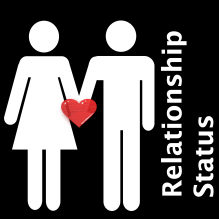Do you know why Relationship Surveys are so Important?
While some of our mothers may protest to the contrary, nobody’s perfect. Credit unions are the same. If you’re looking for ways to improve your business, where would you start?
We figure the best way to begin the slog toward improvement is by assessing where you currently stand in the eyes of your members. You can get a good picture of what they think by taking a short relationship survey; their opinions about you can tell you whether you’re on the right track or if you need to seriously reconsider the direction you’re going.
You’ll probably start by finding your net promoter score (NPS). The survey results will be a number between -100 and 100, wherein a positive number reflects the great job you’re doing, and a negative number shows you by how far you’ve missed the mark.
Okay! Time to Take a Survey!
Not so fast! What, pray tell, are you planning to ask in this survey?
Challenge mode: you get only one question.
Go!
What to Ask in a Survey
If you’re ready to see your NPS, you’ll have to ask a question that the survey can adequately score. You have two main options, both of which measure some aspect of how your business is performing. The first option is to ask, “how are we doing?” The second option is to ask, “how did we do?” They’re remarkably similar questions that measure very different things.
The first question—“how are we doing?”—measures the strength of the bonds you’ve built with your members. This question is what we call a relationship survey. A negative response indicates a relationship that needs work, whereas a positive response confirms that whatever it is that you’re doing, it’s working. Asking “how are we doing” will give you insight into general customer satisfaction.
The second question—“how did we do?”—measures your performance during a specific transaction. Questions following this format are called transactional surveys, and they tend to measure specifics rather than generalities.
Relationship Surveys
The best first step you can take to assess how your members see you is by administering a relationship survey. The first time you ask “how are we doing,” you get a baseline picture of where you stand. From there, you can set a realistic goal and develop a plan to get there.
Periodically, you’ll need to ask the same question again. By repeating the same question quarterly or yearly, you can begin to track your progress. If you’ve introduced new features, or spent more time training for customer service, you can determine whether your efforts have had an effect on your NPS.
Relationship surveys are designed to give you a broad understanding about whether or not your customers like doing business with you. If they like you, they’re far more willing to put up with a couple hiccups or missteps on your part. If they don’t like you, they’re far less likely to forgive any grievances.
When Not to Administer Relationship Surveys
Relationship surveys are all about the big picture, though. If you’d like to see how your members feel about the experience of depositing checks, or taking out a loan, or banking online, you’d be better served by a transactional survey: asking “how did we do” after a transactional event will let you know how members feel about their experience with specific services.
Both questions are designed to help you better understand how you’re doing in the eyes of your members. A mediocre relationship score might not give you all the information you need. However, if you follow up with a transactional question that reveals a negative NPS, you may have a clue about what to target for improvement.





